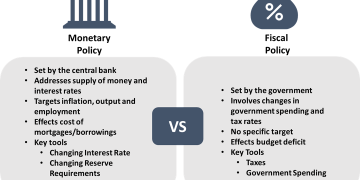Introduction
The approval and launch of a Bitcoin exchange-traded fund (ETF) marks a turning point in the relationship between traditional financial markets and the cryptocurrency world. For years, investors who wanted exposure to Bitcoin had to either buy and store the asset directly or invest in proxy companies such as miners or crypto exchanges. The introduction of a spot Bitcoin ETF has changed this dynamic. It enables mainstream investors to access Bitcoin directly through traditional stock exchanges in a familiar, regulated format.
But the real question is: how does this new product affect the stock market as a whole? The answer is complex. A Bitcoin ETF influences the equity market through multiple channels, including capital flows, sector performance, volatility transmission, and changes in investor behavior. This article explores these effects in detail, offering a comprehensive yet readable overview.
1. What Is a Bitcoin ETF and Why Does It Matter?
A Bitcoin ETF is a financial product that tracks the price of Bitcoin and is listed on a stock exchange. Investors can buy or sell ETF shares just as they would shares of Apple or Microsoft. Unlike owning Bitcoin directly, ETF investors do not need digital wallets, private keys, or access to crypto exchanges. Instead, the ETF structure handles custody and regulatory compliance.
There are two main types of Bitcoin ETFs:
- Spot Bitcoin ETFs: These funds purchase and hold actual Bitcoin, and the ETF’s value reflects the real-time price of the cryptocurrency.
- Futures-based Bitcoin ETFs: These funds invest in Bitcoin futures contracts, which may not always perfectly track the spot price.
The arrival of a spot Bitcoin ETF is particularly significant. It lowers barriers to entry, allows institutional investors to participate within regulatory constraints, and adds credibility to Bitcoin as an asset class. As a result, billions of dollars can flow into Bitcoin through traditional financial channels.
2. How ETF Flows Connect to the Stock Market
The mechanics of ETFs are critical for understanding their impact. ETFs operate on a system of creation and redemption managed by authorized participants (APs) and market makers. When investors buy shares of a Bitcoin ETF, APs create new shares by delivering Bitcoin (or cash equivalent) to the fund. When investors sell, shares are redeemed, and Bitcoin may be sold on the open market.
This structure creates a direct connection between equity markets and the cryptocurrency spot market. Buying or selling activity on stock exchanges translates into demand or supply for Bitcoin. Moreover, arbitrage opportunities keep ETF prices close to the underlying asset value, ensuring tight linkage between the two markets.
The process also introduces new hedging and derivatives strategies. Market makers often use Bitcoin futures and options to balance their exposure, creating additional channels through which ETF flows influence not only the crypto market but also the equity and derivatives markets.
3. Real-World Effects After U.S. Approval
When U.S. regulators approved spot Bitcoin ETFs, the impact was immediate and visible. Several effects unfolded:
- Large Inflows of Capital: Investors poured billions into these ETFs within weeks. This demand had to be met by acquiring actual Bitcoin, pushing prices upward.
- Rotation From Proxy Stocks: Before ETFs, many investors seeking Bitcoin exposure bought shares of miners, exchanges, or companies holding Bitcoin. After ETFs became available, some of that capital shifted into ETFs, affecting the valuations of those proxy stocks.
- Broader Market Sentiment: The approval itself was interpreted as a sign of regulatory acceptance, improving investor confidence not just in crypto but in risk assets more generally. This boosted sentiment in certain corners of the stock market.

4. Which Stocks Are Most Affected?
The stock market is vast, and not every sector feels the impact of Bitcoin ETFs equally. Several groups of stocks are especially sensitive:
A. Bitcoin Miners
Mining companies are among the most directly affected. Their revenues depend on the Bitcoin price, and when ETF-driven demand pushes Bitcoin higher, miners benefit disproportionately. However, miners can also be negatively affected if investors choose ETFs over miner stocks for direct exposure.
B. Exchanges and Custody Providers
Crypto exchanges and custody firms may see both positive and negative effects. On the one hand, institutionalization brings more demand for regulated custody solutions. On the other, retail trading activity on traditional crypto exchanges may decline as ETFs provide a simpler alternative.
C. Technology and Semiconductor Companies
Companies producing hardware for mining or providing cloud services can benefit indirectly from increased crypto activity. However, these firms are diversified and not solely dependent on crypto.
D. Asset Managers and Issuers
Firms that launch successful Bitcoin ETFs earn fees and reputational advantages. While the direct revenue impact may be limited relative to total assets under management, it strengthens their brand in the innovation space.
E. Corporates With Bitcoin on Balance Sheets
Some companies hold Bitcoin as part of their treasury strategy. These firms once served as indirect exposure vehicles, but ETFs may reduce their appeal as investors now have a cleaner alternative.
5. Correlation and Volatility
A central effect of Bitcoin ETFs is the change in correlation between Bitcoin and stocks.
- Rising Correlations: With ETFs integrating Bitcoin into institutional portfolios, rebalancing decisions can cause Bitcoin and equities to move more closely together. For instance, during market stress, investors may sell both Bitcoin ETFs and equities, increasing correlation.
- Volatility Dynamics: ETFs can reduce volatility by deepening liquidity and standardizing access. However, they can also amplify volatility during sudden inflows or outflows, as large creation or redemption events ripple through both markets.
6. Derivatives and Hedging Effects
The launch of ETFs also deepens derivatives activity. Options on ETF shares introduce hedging behavior that can amplify market moves. For example, market makers hedging option exposures may need to buy or sell large amounts of ETF shares and, indirectly, Bitcoin. Futures markets also adapt, with increased demand from institutions using futures for risk management.
This creates feedback loops: equity market dynamics affect Bitcoin through ETF flows, while Bitcoin price movements influence equity-related hedging strategies.
7. Broader Implications for the Stock Market
Beyond specific sectors, Bitcoin ETFs affect the stock market in broader ways:
- Portfolio Construction: Institutional investors may now allocate a portion of traditional portfolios to Bitcoin ETFs. This changes asset allocation models and requires new risk management approaches.
- Market Liquidity: ETFs attract new investors, increasing trading volumes and market depth on stock exchanges.
- Investor Behavior: Retail investors, in particular, can now treat Bitcoin like any other stock, which may shift trading patterns and sentiment across equities.
8. Possible Future Scenarios
The future impact of Bitcoin ETFs depends on how adoption unfolds. Consider three scenarios:
- Steady Integration: Bitcoin ETFs become a standard allocation. Correlations rise moderately, and stocks tied to crypto enjoy gradual growth.
- Speculative Boom and Bust: Rapid inflows drive Bitcoin prices higher, but sudden outflows create sharp corrections, transmitting volatility to stocks.
- Regulatory Shifts: New rules could slow ETF growth or reshape custody requirements, affecting related equities.
9. Guidance for Investors
For investors considering the implications of Bitcoin ETFs, several strategies are worth noting:
- Diversify Exposure: A mix of direct ETFs, proxy stocks, and traditional equities can balance risk.
- Monitor Flows: ETF inflows and outflows often signal market sentiment and can foreshadow moves in related equities.
- Be Wary of Proxies: While miners and other crypto-linked stocks can benefit from Bitcoin’s rise, ETFs now offer cleaner exposure, reducing the role of proxies.
- Long-Term Perspective: Bitcoin remains volatile. ETFs make access easier but do not change the underlying risks. Investors should align allocations with long-term goals and risk tolerance.
10. Conclusion
The launch of Bitcoin ETFs represents a historic moment for both the cryptocurrency and equity markets. By bridging the gap between digital assets and traditional finance, these products create new opportunities, risks, and linkages. They directly affect certain sectors like miners, exchanges, and custody providers, while also influencing correlations, volatility, and portfolio construction at a broader level.
For the stock market, Bitcoin ETFs are both a challenge and an opportunity. They integrate an emerging, volatile asset into the heart of traditional finance, ensuring that the fates of Bitcoin and equities are now more closely tied than ever. Investors, regulators, and institutions must adapt to this new reality, balancing innovation with prudence. The ultimate outcome will depend on adoption patterns, regulatory frameworks, and the evolving dynamics of global markets.















































